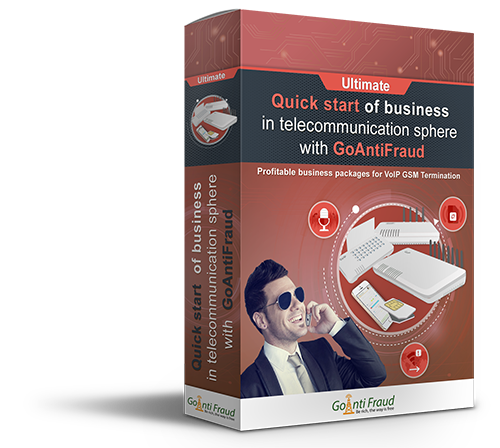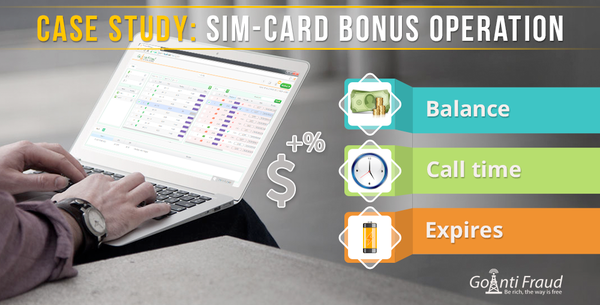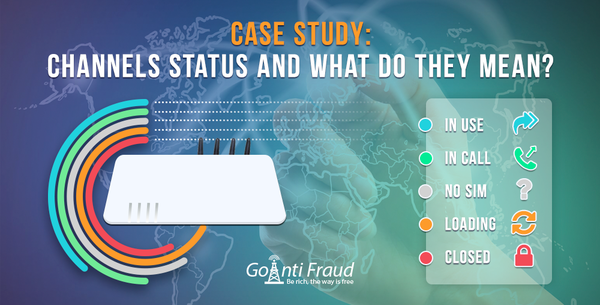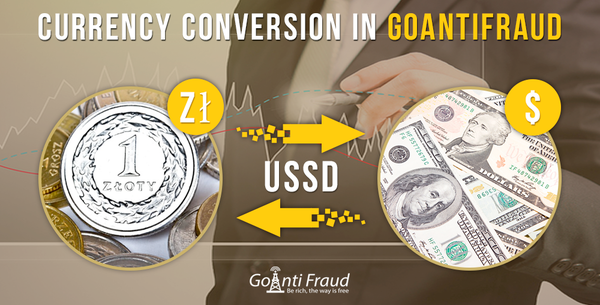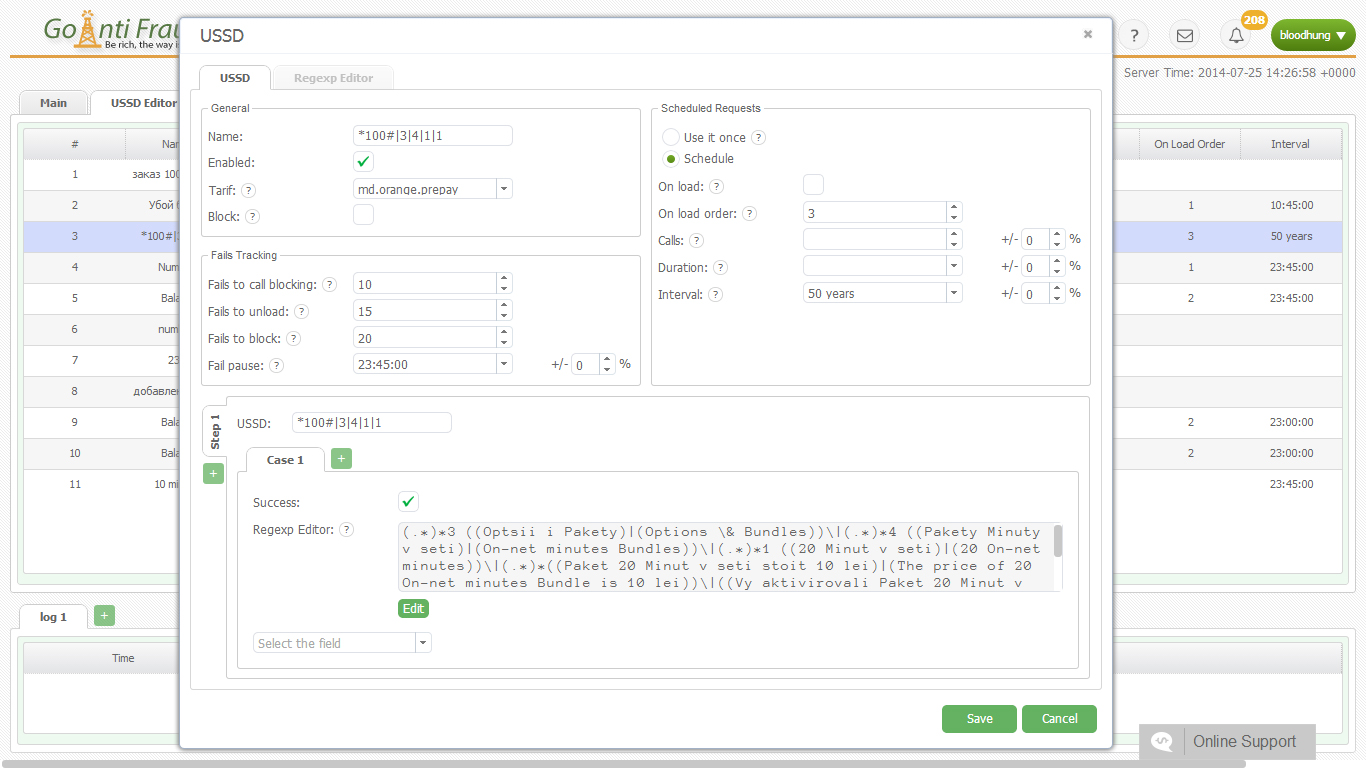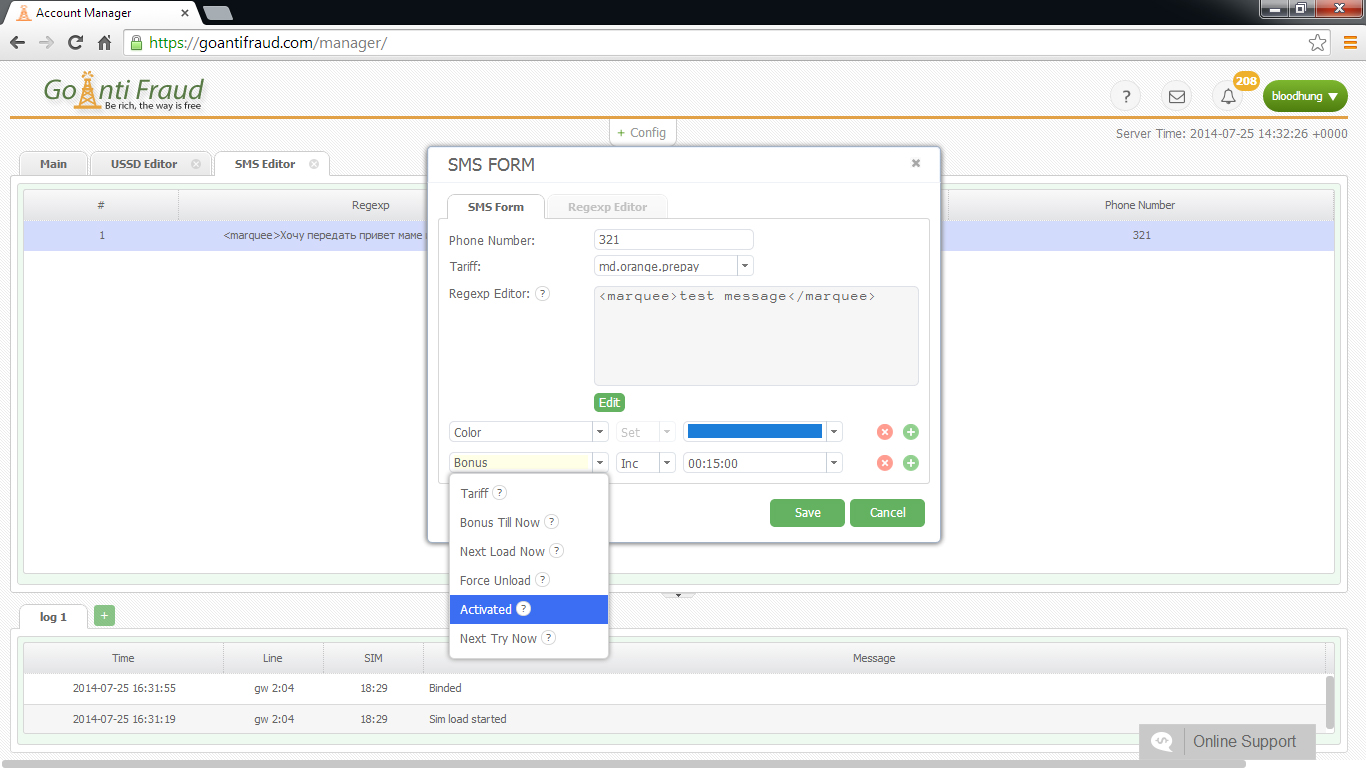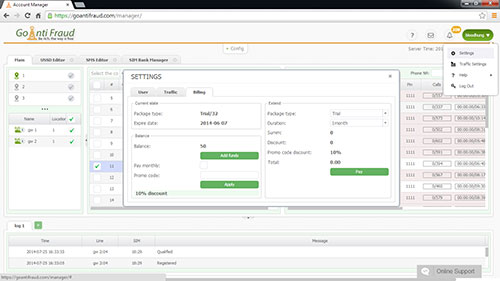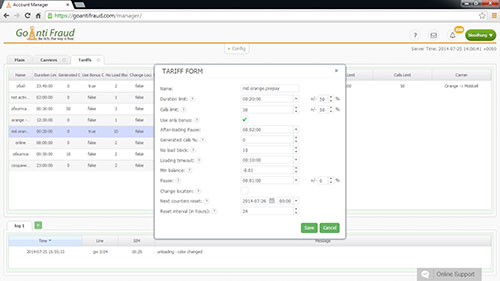Today we are going to discuss how carriers can detect gateways and block SIM-cards, as well as how you can avoid this.
If you have ever thought about how this is happening you may know that the card’s behavior in the gateway by default is much different from real subscribers’ behavior. Real subscribers are pretty much predictable about call destination, their location, idle time and number of calls and so on.
The cards in the gateway do not fit in this subscriber pattern and are even more predictable.
So, if you are trying to maximize your profit by uploading a card, it will have its own pattern that the carrier will recognize and will block this card.
If you want to maximize your profit this by optimizing the traffic load on the card and make the card look like a human and protect cards from the carriers’ doubts. This will extend the lifespan of your cards.
You will not have to buy new cards and protect the balance on cards, at least, for some time.
GoAntiFraud is a complex tool to realize any behavior pattern you may want to implement. Less suspicious the pattern you use is, much longer the card will operate. Because the anti fraud logic of each carrier may be completely different, you just need to experiment with the service logic a bit. As soon as you find your pattern, your profits will increase surprisingly fast.
What exactly parameters carriers watch to realize what exactly is happening with a card.
There is a lot of them. Each time you are manipulating a SIM-card, the carrier already knows about it. All of this parameters count, even when you are moving around or the card is just on air mode.
We will take a closer look on the most important parameters.
-
Relocation.
When a subscriber is changing his location, the carrier can track it. This is what the carrier must do to provide the best signal from the closest base station to a subscriber.
In a large cities, the base station covers 2-3 km around itself.
It means there is a lot of BS around to optimize BS service. So, when the subscriber is changing his location, the subscriber’s cell phone is changing the BS. The gateway is tied to its physical position because it needs the power supply and internet connection. How can we simulate relocation for cards in the gateway? The gateway employs a SIM-bank. The SIM-bank is a device that you can use to insert SIM-cards in and virtually load cards to the specified gateway via the IE. We need to make the card to relocate from one gateway that is tied to the base station to another one in another location and so on. But this is not all. We need to set up when the card should move, how long the route can take, as well as keep IMEI for the card unchanged. -
IMEI
IMEI is a second parameter that the carrier can easily track.
IMEI is a unique number of a GSM module or a telephone. Each telephone has a different IMEI. An actual subscriber rarely switches a card between cellphones. On the other hand, if the card is reloaded from one gateway to another, each time it will have a different IMEI and that's not what we want.
The gateway itself can generate and change IMEI for each channel. But it doesn't care about what IMEI the card had before.
In our system, we generate a valid IMEI and assign it to each card. So, when the card is changing the gateway, it keeps the same IMEI each time. -
Preferred numbers and Incoming calls.
The real subscriber usually has a list of numbers that he's calling more often than others. This list usually consist of relatives and friends, and so on. The card in the gateway usually calls a new number every time.
Incoming calls is next property of a real subscriber
Who will pick up a phone, when you dial the card in the gateway? Nobody will. In order to cover these two features, we've come up with the solution. GAF can have one card making an outgoing call to the neighboring card that is in a gateway. The real conversation record answers an incoming call. We can specify what exactly card should call each other as well as how often and how long the conversation time will be. We can distribute all cards by groups and inter calling will happen only inside of the group. - SMS and USSD requests. We can simply make the card send ussd/sms to a destination you want and analyze the answers. We can gather any information from the response and then track all the information the carrier provides on balance, bonus, a card top-up, activation, and so on. Based on this information, we can even change the card’s behavior using discussed features. There are many more features you can set up to make card look like a real subscriber. If you get interested, you are welcome to experiment with our service, and we are always ready to help you if it gets you confused.






